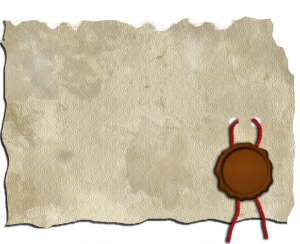 In this article we will explore the often asked question of how to register an invention.
In this article we will explore the often asked question of how to register an invention.
There are two different approaches that inventors can take to registering their invention.The first is to do it yourself; the second is to employ a professional patent attorney to do this on your behalf.
How To Register An Invention Yourself
If you are going to do your own patent there are a few simple steps to follow. Hire other people to do the small things that take expertise. You can probably fill out the basic provisional application paperwork yourself. There are basic directions at the USPTO website. In addition, the USPTO will put you in touch with staff that can give you basic, general advice that is not specific to your invention.
A first cut basic patent search: This you can do yourself
It is not recommended that inventors who do not have patent experience rely on their own patent searches because searches can be more difficult than people think. A “first cut” search may find a patent for what you “invented”, though, and can save you from paying a professional to find what you could find yourself.
There are several patent search databases available, including one at the USPTO website and one at the Google Patent website.
A Second Search By A Professional
If the inventor as patent searcher does not find the patent, or has difficulty in doing so, the next step is to hire a professional patent searcher or patent attorney to do a search for you. If the goal is to keep costs down and the invention is not overly complex, a patent searcher can look for the invention. A patent searcher or someone should also look for prior art, which includes any journal articles or related materials in the public domain that may not be patentable. If there is prior art on your invention even if there is no patent it is probably not patentable.
If the searcher does not find your invention, you can then go on to the next steps, which include writing the patent, producing drawings that show the patent, and filing the patent. If you are wanting to know how to register an invention quicker than this, unfortunately the process itself will be out of your control once you have made the application.
How To Register An Invention Using An Attorney
Complex Patents
If you have a complex patent you may want a patent attorney or patent agent to guide you through the entire process. They can fill out the paperwork to file with the United States Patent and Trademark Office (USPTO). Only a patent attorney can appear before the Patent Courts for many of the proceedings. Patent agents generally do not have experience with licensing, so if either is necessary, a patent attorney may be necessary. Patent agents can do all of the necessary work related to filing a patent unless the patent is challenged, which may make the case more complicated.
The paperwork should contain line by line descriptions of the invention that “teach” what the patent is. There should be somewhat similar patents available to learn some of the language use. The patent should also be supported by schematics, drawings of the invention that show it from different angles. The paperwork is probably the most difficult part of the patenting process and it is the point where many patents get derailed.
A Brief Note About The Patent Examination Process
Either you the inventor or the patent attorney or patent agent will go through the examination process where the patent is reviewed in detail. The USPTO will have contact with the individual handling the patent and amendments to the paperwork are often necessary. This usually takes many months up to a year or more depending on the type of patent and backlog at the USTPO.
For those wanting to know how to register an invention in the UK, Europe, Australia and in other places
The process discussed above will apply to most Western countries, except that each country will have their own independent patent office. Do a search online to find the patent office related to your country or the country where you are wanting to register the invention in.
